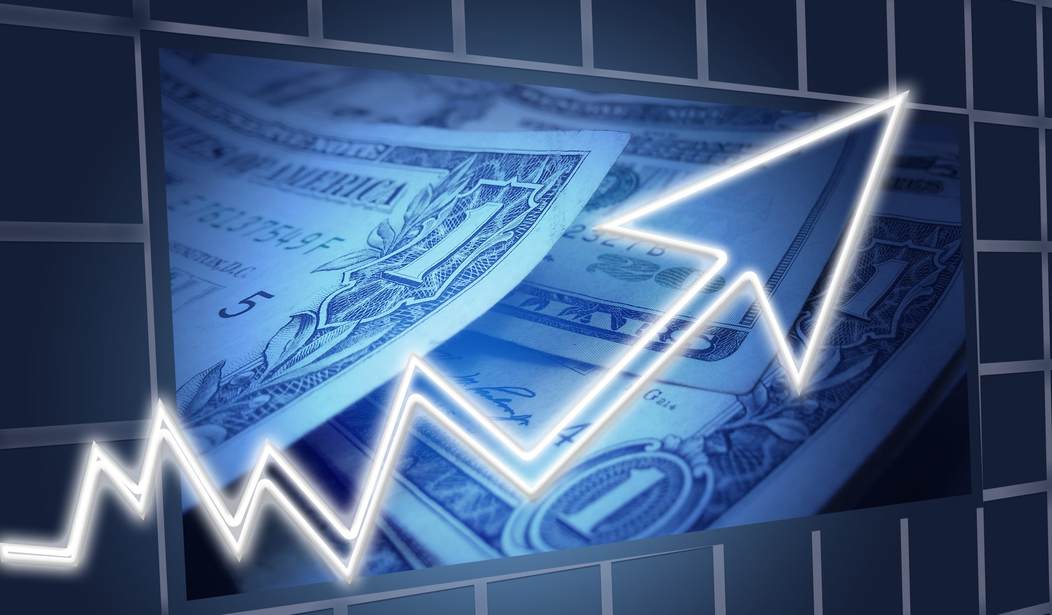Appearing remotely on Sunday’s Face the Nation, St Louis Federal Reserve Bank Chairman James Bullard indicated that the Fed has no idea, really, just how bad the Coronavirus Contraction is going to get. Asked by Margaret Brennan about his team’s prediction that “47 million Americans could lose their jobs,” bringing the unemployment rate up to 32%, Bullard said the “32 percent number is a compromise in the middle.”
In the middle of what, you might ask. Bullard told Brennan that he and his economists at the St. Louis Fed estimate that the “unemployment rate could go anywhere between 10 percent and 42 percent.”
So things could get Great Recession bad or blow past the 25% unemployment record set during the depths of the Great Depression in 1933. That’s a bit like the doctor telling you that you either have a bad case of the flu or maybe caught a rare form of cancer that makes all your limbs slowly fall off.
I’m not picking on Bullard here. Not only does no one know what’s going to happen to the economy, at this point nobody can know. The question is less “How bad is it going to get?” but “How quickly do we recover?”
The answer to that could be very nice, indeed.
An economy with plenty of liquidity and weeks of pent-up demand ought to bounce back almost as quickly as it sank — like a big kid on a trampoline. Sharp economic downturns are usually followed by equally sharp recoveries. The 1981-82 and 1991 recessions come to mind.
What made the Great Depression and the Great Recession alike were anemic recoveries that took seemingly forever. As I noted back in March [VIP link]:
When Franklin Delano Roosevelt came into office pledging to end the Great Depression, he and Congress simmered up a party-size bowl of alphabet soup agencies to micromanage the business, wages, prices, and employment. The result? A couple of left-leaning UCLA economists were forced to conclude that FDR’s New Deal actually lengthened the Great Depression by seven years.
Coming into office on the heels of the 2007-08 financial panic (caused in no small part by Washington meddling in the mortgage markets), President Barack Obama indulged in a flurry of lawmaking and micromanagement unseen since FDR. As a result, Obama’s recovery was the slowest since FDR’s. In some ways — Washington’s addictions to spending and debt are the worst examples — we’re still dealing with the hangover from Obama’s reaction to the Great Recession.
But back to Bullard on Face the Nation. Asked if there “will be somehow just a switch that flips on and the economy will come back roaring,” Bullard said:
Well, I think it can be done. Whether it will be done depends on execution. I thought Congress did a great thing in passing their bill. I thought it was appropriately sized for this situation. The object is to keep everybody whole during the period when you’re asking people to not go to their jobs and not go to the shops and – and basically not participate in the economy.
This is no bailout for big banks like we saw during the Great Recession. If anything, Congress is following the Fifth Amendment. The Fifth states that private property cannot “be taken for public use, without just compensation.” If your labor isn’t your property, then what is? If stopping a pandemic isn’t public use, then what is? Relief checks aren’t enough in my opinion, but they do represent at least some small amount of compensation for government orders to stay home and not work.
And as Bullard noted, “There’s nothing wrong with the economy itself. The economy was actually doing quite well going into this health situation.” If Washington can manage not to insert itself into the recovery, we ought to get right back to where we were before coronavirus in short order. The Democrat-controlled House is going to have a very strong itch to hobble the economy with a progressive wishlist of crap legislation, but the GOP-held Senate and White House ought to put the kibosh on any such nonsense.
There are some excellent indicators that the worst might soon be over. The White House noted on Sunday that there have been signs of stabilization in hospital rates, and New York enjoyed — if that’s the word — its first daily decline in COVID-19-related deaths. Death rates are slowing in Europe, too, even in hard-hit Italy and Spain. Social distancing works, and as I reminded you three weeks ago [VIP link], “extreme measures at the start of a crisis can prevent extreme consequences later on.”
For now we’re stuck in the middle: We’ve taken the extreme measures, but the crisis persists. But it also looks like we’ll avoid the extreme worst-case scenario, in no small part because of those extreme measures. Strangely enough, gridlocked Washington is kind of a best-case scenario for this particular crisis. The economy needs craploads of liquidity at a time when spending craploads of money is the one thing both parties can agree on. What the economy doesn’t need is a bunch of new agencies and regulatory schemes hobbling the recovery — and gridlock ought to prevent just that.
So hang in there. We’re not off the bumpy road yet, but I think America and Americans are going to emerge from this thing stronger than ever.










Join the conversation as a VIP Member